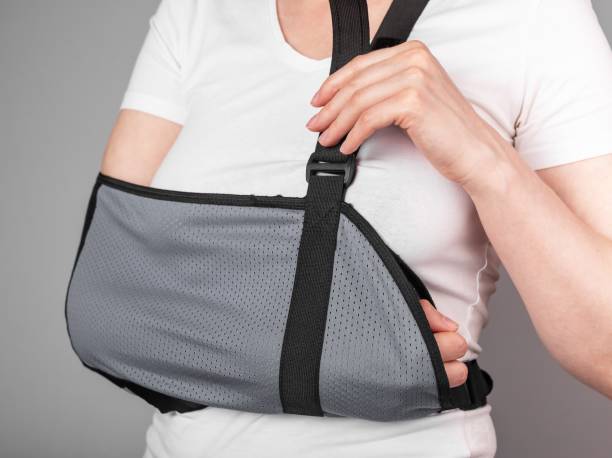 Shoulder surgeries are often necessary to address a wide range of orthopedic issues, from rotator cuff tears to dislocated shoulders. While these procedures aim to alleviate pain and improve function, it’s crucial to acknowledge that some shoulder surgeries can be more painful than others. In this blog post, we will explore the most painful shoulder surgeries, shed light on the reasons behind the pain, and discuss strategies for managing post-operative discomfort.
Shoulder surgeries are often necessary to address a wide range of orthopedic issues, from rotator cuff tears to dislocated shoulders. While these procedures aim to alleviate pain and improve function, it’s crucial to acknowledge that some shoulder surgeries can be more painful than others. In this blog post, we will explore the most painful shoulder surgeries, shed light on the reasons behind the pain, and discuss strategies for managing post-operative discomfort.
- Reverse Shoulder Arthroplasty:
Reverse shoulder arthroplasty, commonly used to treat complex shoulder problems, such as irreparable rotator cuff tears or severe arthritis, is often considered one of the most painful shoulder surgeries. This procedure involves reversing the ball-and-socket relationship of the shoulder joint, which can result in significant post-operative discomfort.
Why It’s Painful:
- The extensive manipulation of soft tissues and bone during the surgery can lead to inflammation, nerve irritation, and increased pain.
- The procedure’s complexity may require a more extended recovery period, during which pain can persist.
- Managing post-operative pain and discomfort is particularly crucial for patients undergoing reverse shoulder arthroplasty.
- Rotator Cuff Repair:
Rotator cuff repair surgery is another shoulder procedure known for its post-operative pain. This surgery aims to mend torn tendons in the rotator cuff and restore shoulder function.
Why It’s Painful:
- The repair of the rotator cuff often involves suturing and reattaching tendons to the bone, which can lead to localized pain and discomfort.
- The rotator cuff is a complex structure with multiple layers, making the surgery intricate, which can result in prolonged post-operative pain.
- Bankart Repair for Shoulder Dislocation:
Bankart repair is performed to treat recurrent shoulder dislocations. During this surgery, the surgeon repairs and tightens the torn labrum in the shoulder joint.
Why It’s Painful:
- Manipulating the labrum and reattaching it to the bone can cause discomfort and pain in the affected shoulder.
- Recovery may require the use of immobilizers or slings, which can add to the discomfort.
- SLAP Repair:
Superior Labrum Anterior to Posterior (SLAP) repair is a procedure used to treat injuries to the superior labrum, where the biceps tendon attaches. This surgery can also be notably painful.
Why It’s Painful:
- Repairing the labrum in the shoulder’s upper part, near the biceps tendon, involves intricate work, leading to post-operative pain.
- The biceps tendon’s proximity to the surgery site can contribute to discomfort.
Managing Post-Operative Pain:
While the pain associated with these shoulder surgeries can be challenging, there are various strategies to manage and alleviate discomfort:
- Medications: Your surgeon will prescribe pain-relieving medications. It’s essential to take them as directed to manage pain effectively.
- Physical Therapy: Rehabilitation and physical therapy are vital for restoring shoulder function and reducing pain. Following your therapist’s exercises and guidance is crucial.
- Ice and Heat: Using ice and heat packs as recommended can help reduce inflammation and soothe the surgical site.
- Immobilization: Wearing a sling or brace as instructed is essential for stabilizing the shoulder and minimizing movement that can exacerbate pain.
- Rest and Sleep: Adequate rest and proper sleep are crucial for healing. Maintaining a comfortable sleep environment is essential, as discussed in our previous blog post on “How to Sleep After Shoulder Surgery.”
 Shoulder surgeries can be challenging, and some are indeed more painful than others. However, it’s essential to remember that pain is a natural part of the healing process. By following your surgeon’s recommendations, diligently participating in physical therapy, and managing pain with prescribed medications and supportive measures, you can navigate the post-operative period more comfortably and look forward to a healthier, pain-free shoulder in the long run. Consulting your surgeon for personalized guidance and support is key to managing the specific challenges associated with your shoulder surgery.
Shoulder surgeries can be challenging, and some are indeed more painful than others. However, it’s essential to remember that pain is a natural part of the healing process. By following your surgeon’s recommendations, diligently participating in physical therapy, and managing pain with prescribed medications and supportive measures, you can navigate the post-operative period more comfortably and look forward to a healthier, pain-free shoulder in the long run. Consulting your surgeon for personalized guidance and support is key to managing the specific challenges associated with your shoulder surgery.
DISCLAIMER: THIS WEBSITE DOES NOT PROVIDE MEDICAL ADVICE The information, including but not limited to, text, graphics, images and other material contained on this website are for informational purposes only. No material on this site is intended to be a substitute for professional medical advice, diagnosis or treatment. Always seek the advice of your physician or other qualified health care provider with any questions you may have regarding a medical condition or treatment and before undertaking a new health care regimen, and never disregard professional medical advice or delay in seeking it because of something you have read on this website.




